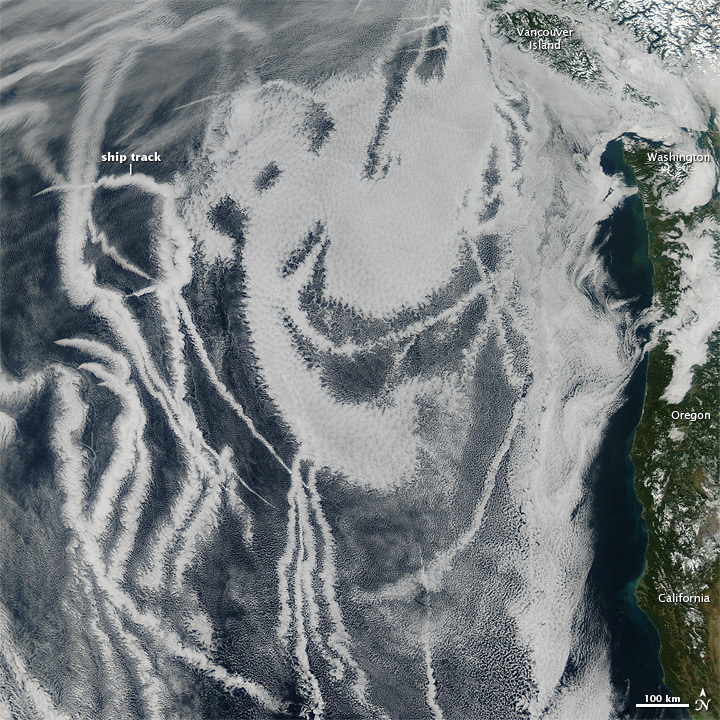An increase in cloud thinning decreases the effectiveness of marine cloud brightening

Results from a new paper reveal that previous estimates of anthropogenic aerosols’ radiative impact on cloud tracks formed by ship exhaust have been overestimated by as much as 200%.
These low-hanging ship-track clouds were previously thought to have a cooling influence on earth system dynamics. However, a new study published in Science and conducted by researchers at the Cooperative Institute for Research In Environmental Sciences (CIRES) and the National Oceanic and Atmospheric Administration (NOAA) finds that the ship exhaust plume particles have significantly less of an impact on cloud formation than previously theorized.
The U.S. Department of Energy’s Atmospheric System Research (ASR) program provided funding for this study via an Interagency Agreement grant, and former CIRES scientist Franziska Glassmeier (Delft University of Technology, Netherlands) served as lead author on the paper along with co-authors Fabian Hoffmann (Ludwig-Maximilian University of Munich, Germany), Takanobu Yamaguchi (CIRES), and Graham Feingold (NOAA).
“Ship-track clouds are a good example of how aerosol effects on clouds are traditionally thought of,” says Glassmeier, noting that the problem is that these clouds are too short-lived to provide a good model for how most marine clouds work.
Using a variety of methods—including high-resolution models covering a large range of conditions, machine learning approaches, and a comparison of detailed numerical simulations with satellite analyses—researchers were able to show that nonprecipitating stratocumulus ship-track clouds can lead to aerosol-enhanced cloud-top mixing called cloud thinning.
Cloud thinning happens when there are a high number of aerosol particles in the cloud along with small water droplets. Less water in the cloud means more solar radiation can pass through. Therefore, the cloud isn’t cooling very effectively.
As cloud thinning increases, the cooling effects of marine cloud brightening decrease, something that Feingold says, had not been considered before. “This reduced cooling effect due to cloud thinning needs to be taken into account for models to correctly simulate the role of stratocumulus clouds.”
Read the full CIRES news release.
# # #This work was supported by the U.S. Department of Energy’s Office of Science, through the Biological and Environmental Research program as part of the Atmospheric System Research program.

